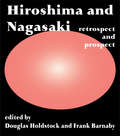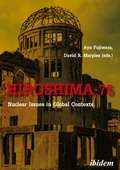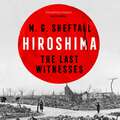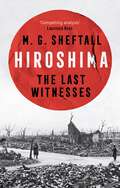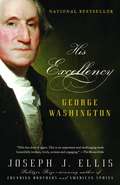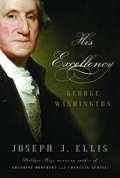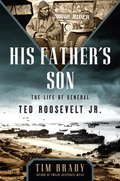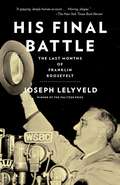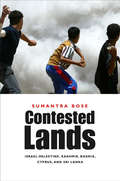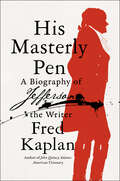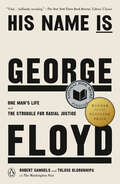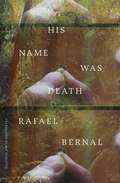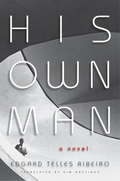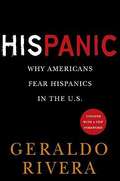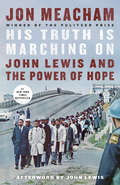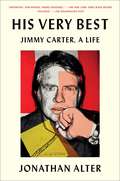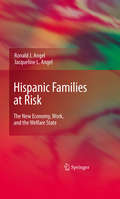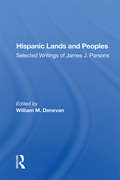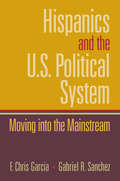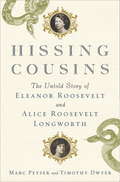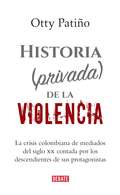- Table View
- List View
Hiroshima
by Ran ZwigenbergIn 1962, a Hiroshima peace delegation and an Auschwitz survivor's organization exchanged relics and testimonies, including the bones and ashes of Auschwitz victims. This symbolic encounter, in which the dead were literally conscripted in the service of the politics of the living, serves as a cornerstone of this volume, capturing how memory was utilized to rebuild and redefine a shattered world. This is a powerful study of the contentious history of remembrance and the commemoration of the atomic bomb in Hiroshima in the context of the global development of Holocaust and World War II memory. Emphasizing the importance of nuclear issues in the 1950s and 1960s, Zwigenberg traces the rise of global commemoration culture through the reconstruction of Hiroshima as a 'City of Bright Peace', memorials and museums, global tourism, developments in psychiatry, and the emergence of the figure of the survivor-witness and its consequences for global memory practices.
Hiroshima and Nagasaki: Restrospect and Prospect
by Frank Barnaby Douglas HoldstockFify-three years ago the first nuclear bombs were dropped on Hiroshima and Nagasaki. They killed some 250,000 poeple. A distinguished group of contributors examine the background and effects of the bombing and look at the lessons for a world which harbours 45,000 nuclear warheads.
Hiroshima-75: Nuclear Issues in Global Contexts
by David Marples Fujiwara Aya75 years after the United States dropped the world’s first atomic bombs on the Japanese cities of Hiroshima and Nagasaki, a group of international scholars offers new perspectives on this event and the history, development, and portrayal of the utilization of atomic energy: in military and civilian industries, civil nuclear power, literature and film, and the contemporary world. What lessons have we learned since the end of the Second World War? Can we avoid disasters such as Chernobyl and Fukushima? Have we learned to live with man-made nuclear power in the 21st century?
Hiroshima: The Last Witnesses
by M.G. SheftallThe stories of hibakusha - Japanese for atomic bomb survivors - lie at the heart of this compelling minute-by-minute account of 6 August 1945 - the day the world changed forever as the Enola Gay dropped its payload over Hiroshima, ushering in the nuclear age. These survivors and witnesses, now with an average age of over 90, are the last people alive who can still provide us with reliable and detailed testimony about life in Hiroshima before the bombings. In this heart-stopping account they relay what they experienced on the day the city was obliterated, and what it has been like to live with those memories and scars over the rest of their lives.M. G. Sheftall has spent years personally interviewing survivors who were just adolescents at the time but have lived well into their nineties, allowing him to construct portraits of what Hiroshima was like before the bomb, and how catastrophically its citizens' lives changed in the seconds, minutes, days, weeks, months and years afterwards. Fluent in spoken and written Japanese, his deep immersion in Japanese society has given him unprecedented access to the hibakusha in their waning years. Their trust in him is evident in the personal and traumatic depths they open up for him as he records their stories.The result is a deeply human history of an unfathomable tragedy, which continues to haunt the world today.
Hiroshima: The Last Witnesses
by M.G. SheftallThe stories of hibakusha - Japanese for atomic bomb survivors - lie at the heart of this compelling minute-by-minute account of 6 August 1945 - the day the world changed forever as the Enola Gay dropped its payload over Hiroshima, ushering in the nuclear age. These survivors and witnesses, now with an average age of over 90, are the last people alive who can still provide us with reliable and detailed testimony about life in Hiroshima before the bombings. In this heart-stopping account they relay what they experienced on the day the city was obliterated, and what it has been like to live with those memories and scars over the rest of their lives.M. G. Sheftall has spent years personally interviewing survivors who were just adolescents at the time but have lived well into their nineties, allowing him to construct portraits of what Hiroshima was like before the bomb, and how catastrophically its citizens' lives changed in the seconds, minutes, days, weeks, months and years afterwards. Fluent in spoken and written Japanese, his deep immersion in Japanese society has given him unprecedented access to the hibakusha in their waning years. Their trust in him is evident in the personal and traumatic depths they open up for him as he records their stories.The result is a deeply human history of an unfathomable tragedy, which continues to haunt the world today.
His Excellency, George Washington
by Joseph J. EllisTo this landmark biography of our first president, Joseph J. Ellis brings the exacting scholarship, shrewd analysis, and lyric prose that have made him one of the premier historians of the Revolutionary era. Training his lens on a figure who sometimes seems as remote as his effigy on Mount Rushmore, Ellis assesses George Washington as a military and political leader and a man whose statue-like solidity concealed volcanic energies and emotions. Here is the impetuous young officer whose miraculous survival in combat half-convinced him that he could not be killed. Here is the free-spending landowner whose debts to English merchants instilled him with a prickly resentment of imperial power. We see the general who lost more battles than he won and the reluctant president who tried to float above the partisan feuding of his cabinet. His Excellency is a magnificent work, indispensable to an understanding not only of its subject but also of the nation he brought into being.
His Excellency: George Washington
by Joseph J. EllisNational BestsellerTo this landmark biography of our first president, Joseph J. Ellis brings the exacting scholarship, shrewd analysis, and lyric prose that have made him one of the premier historians of the Revolutionary era. Training his lens on a figure who sometimes seems as remote as his effigy on Mount Rushmore, Ellis assesses George Washington as a military and political leader and a man whose "statue-like solidity" concealed volcanic energies and emotions. Here is the impetuous young officer whose miraculous survival in combat half-convinced him that he could not be killed. Here is the free-spending landowner whose debts to English merchants instilled him with a prickly resentment of imperial power. We see the general who lost more battles than he won and the reluctant president who tried to float above the partisan feuding of his cabinet. His Excellency is a magnificent work, indispensable to an understanding not only of its subject but also of the nation he brought into being.From the Trade Paperback edition.
His Father's Son: The Life of General Ted Roosevelt, Jr.
by Tim BradyThe story of Theodore Roosevelt, Jr., a fortunate son who proved himself on the battlefields of two world wars.General Omar Bradley said of him, “I have never known a braver man or a more devoted soldier.” But for much of his life, Theodore Roosevelt’s son Ted seemed born to live in his father’s shadow. With the same wide smile, winning charm, and vigorous demeanor, Ted possessed limitless potential, with even the White House within his reach. In the First World War, Ted braved gunfire and gas attacks in France to lead his unit into battle. Yet even after returning home a hero, he was unable to meet the expectations of a public that wanted a man just like his father. A diplomat, writer, and man of great adventure, Ted remained frustrated by his lack of success in the world of politics, witnessing instead the rise of his cousin, Franklin, to the office that had once seemed his for the taking.Then, with World War II looming, Ted reenlisted. In his mid-fifties with a gimpy leg and a heart condition, he was well past his prime, but his insistence to be in the thick of combat proved a vital asset. Paired with the irascible Terry de la Mesa Allen Sr., Ted soon distinguished himself as a front-line general in a campaign that often brought him into conflict with another hard fighter, George Patton. On D-Day, Ted became the oldest soldier and the only general in the Allied forces to storm the beach in the first wave, hobbling across the sand with his cane in one hand and a pistol in the other. His valor and leadership on Utah Beach became the stuff of legends—and earned him the Medal of Honor.His Father's Son delves into the life of a man as courageous, colorful, and unwavering as any of the Roosevelt clan, and offers up a definitive portrait of one of America’s greatest military heroes.INCLUDES PHOTOSFrom the Hardcover edition.
His Final Battle: The Last Months of Franklin Roosevelt
by Joseph Lelyveld"By far the most enigmatic leading figure" of World War II. That's how the British military historian John Keegan described Franklin D. Roosevelt, who frequently left his contemporaries guessing, never more so than at the end of his life. Here, in a hugely insightful account, a prizewinning author and journalist untangles the narrative threads of Roosevelt's final months, showing how he juggled the strategic, political, and personal choices he faced as the war, his presidency, and his life raced in tandem to their climax. The story has been told piecemeal but never like this, with a close focus on Roosevelt himself and his hopes for a stable international order after the war, and how these led him into a prolonged courtship of Joseph Stalin, the Soviet dictator, involving secret, arduous journeys to Tehran and the Crimea. In between, as the war entered its final phase, came the thunderbolt of a dire medical diagnosis, raising urgent questions about the ability of the longest-serving president to stand for a fourth term at a time when he had little choice. Neither his family nor top figures in his administration were informed of his diagnosis, let alone the public or his closest ally, Winston Churchill. With D-Day looming, Roosevelt took a month off on a plantation in the south where he was examined daily by a navy cardiologist, then waited two more months before finally announcing, on the eve of his party's convention, that he'd be a candidate. A political grand master still, he manipulated the selection of a new running mate, with an eye to a possible succession, displaying some of his old vigor and wit in a winning campaign. With precision and compassion, Joseph Lelyveld examines the choices Roosevelt faced, shining new light on his state of mind, preoccupations, and motives, both as leader of the wartime alliance and in his personal life. Confronting his own mortality, Roosevelt operated in the belief that he had a duty to see the war through to the end, telling himself he could always resign if he found he couldn't carry on. Lelyveld delivers an incisive portrait of this deliberately inscrutable man, a consummate leader to the very last. From the Hardcover edition.
His Final Battle: The Last Months of Franklin Roosevelt
by Joseph LelyveldA New York Times 2016 Notable Book"By far the most enigmatic leading figure" of World War II. That's how the British military historian John Keegan described Franklin D. Roosevelt, who frequently left his contemporaries guessing, never more so than at the end of his life. Here, in a hugely insightful account, a prizewinning author and journalist untangles the narrative threads of Roosevelt's final months, showing how he juggled the strategic, political, and personal choices he faced as the war, his presidency, and his life raced in tandem to their climax. The story has been told piecemeal but never like this, with a close focus on Roosevelt himself and his hopes for a stable international order after the war, and how these led him into a prolonged courtship of Joseph Stalin, the Soviet dictator, involving secret, arduous journeys to Tehran and the Crimea. In between, as the war entered its final phase, came the thunderbolt of a dire medical diagnosis, raising urgent questions about the ability of the longest-serving president to stand for a fourth term at a time when he had little choice. Neither his family nor top figures in his administration were informed of his diagnosis, let alone the public or his closest ally, Winston Churchill. With D-Day looming, Roosevelt took a month off on a plantation in the south where he was examined daily by a navy cardiologist, then waited two more months before finally announcing, on the eve of his party's convention, that he'd be a candidate. A political grand master still, he manipulated the selection of a new running mate, with an eye to a possible succession, displaying some of his old vigor and wit in a winning campaign. With precision and compassion, Joseph Lelyveld examines the choices Roosevelt faced, shining new light on his state of mind, preoccupations, and motives, both as leader of the wartime alliance and in his personal life. Confronting his own mortality, Roosevelt operated in the belief that he had a duty to see the war through to the end, telling himself he could always resign if he found he couldn't carry on. Lelyveld delivers an incisive portrait of this deliberately inscrutable man, a consummate leader to the very last.
His Final Battle: The Last Months of Franklin Roosevelt
by Joseph LelyveldA New York Times 2016 Notable Book“By far the most enigmatic leading figure” of World War II. That’s how the British military historian John Keegan described Franklin D. Roosevelt, who frequently left his contemporaries guessing, never more so than at the end of his life. Here, in a hugely insightful account, a prizewinning author and journalist untangles the narrative threads of Roosevelt’s final months, showing how he juggled the strategic, political, and personal choices he faced as the war, his presidency, and his life raced in tandem to their climax. The story has been told piecemeal but never like this, with a close focus on Roosevelt himself and his hopes for a stable international order after the war, and how these led him into a prolonged courtship of Joseph Stalin, the Soviet dictator, involving secret, arduous journeys to Tehran and the Crimea. In between, as the war entered its final phase, came the thunderbolt of a dire medical diagnosis, raising urgent questions about the ability of the longest-serving president to stand for a fourth term at a time when he had little choice. Neither his family nor top figures in his administration were informed of his diagnosis, let alone the public or his closest ally, Winston Churchill. With D-Day looming, Roosevelt took a month off on a plantation in the south where he was examined daily by a navy cardiologist, then waited two more months before finally announcing, on the eve of his party’s convention, that he’d be a candidate. A political grand master still, he manipulated the selection of a new running mate, with an eye to a possible succession, displaying some of his old vigor and wit in a winning campaign. With precision and compassion, Joseph Lelyveld examines the choices Roosevelt faced, shining new light on his state of mind, preoccupations, and motives, both as leader of the wartime alliance and in his personal life. Confronting his own mortality, Roosevelt operated in the belief that he had a duty to see the war through to the end, telling himself he could always resign if he found he couldn’t carry on. Lelyveld delivers an incisive portrait of this deliberately inscrutable man, a consummate leader to the very last.
His Finest Hour: A Biography of Winston Churchill (Brief History Ser.)
by Christopher CatherwoodWho was Winston Churchill? Even fifty years after his death, he is one of the most iconic figures in British history. As a young man he was a maverick journalist; his many positions in politics before 1940 marked him as a courageous but foolhardy man. Yet it is Churchill’s record in war, which has recently been questioned, that confirms his genius as a military commander and national leader—someone who understood the dangers of Nazi Germany before 1939 and someone uniquely capable to lead the empire through the turmoil of the Second World War. Christopher Catherwood argues that it was Churchill’s stand in 1940-41 that saved Britain and that only he was able to bring together the allies that eventually defeated Hitler in 1945. Catherwood has produced a challenging yet lively reassessment of the life and career of Winston Churchill, lion of British history and flawed hero.
His Majesty’s Opponent: Subhas Chandra Bose and India's Struggle against Empire
by Sugata BoseThe man whom Indian nationalists perceived as the “George Washington of India” and who was President of the Indian National Congress in 1938–1939 is a legendary figure. Called Netaji (“leader”) by his countrymen, Subhas Chandra Bose struggled all his life to liberate his people from British rule and, in pursuit of that goal, raised and led the Indian National Army against Allied Forces during World War II. His patriotism, as Gandhi asserted, was second to none, but his actions aroused controversy in India and condemnation in the West. Now, in a definitive biography of the revered Indian nationalist, Sugata Bose deftly explores a charismatic personality whose public and private life encapsulated the contradictions of world history in the first half of the twentieth century. He brilliantly evokes Netaji’s formation in the intellectual milieu of Calcutta and Cambridge, probes his thoughts and relations during years of exile, and analyzes his ascent to the peak of nationalist politics. Amidst riveting accounts of imprisonment and travels, we glimpse the profundity of his struggle: to unite Hindu and Muslim, men and women, and diverse linguistic groups within a single independent Indian nation. Finally, an authoritative account of his untimely death in a plane crash will put to rest rumors about the fate of this “deathless hero.” This epic of a life larger than its legend is both intimate, based on family archives, and global in significance. His Majesty’s Opponent establishes Bose among the giants of Indian and world history.
His Masterly Pen: A Biography of Jefferson the Writer
by Fred KaplanAs he did for Abraham Lincoln and John Quincy Adams, award-winning biographer Fred Kaplan offers a fresh, illuminating look at the life of Thomas Jefferson and his contributions as a writer.In this unique biography, Fred Kaplan emphasizes Thomas Jefferson’s genius with language and his ability to use the power of words to inspire and shape a nation. A man renowned for many talents, writing was one of the major activities of the statemen’s life, though much of his best, most influential writing—with the exception of the letters he wrote up to his death, numbering approximately 100,000—was done by 1789, when Jefferson was just forty-six. All of his works—from his earliest correspondence; his essays and proclamations, including A Summary View of British America, The Declaration of Independence, and Notes on the State of Virginia; his religious and scientific writings; his inaugural addresses; his addresses to Indian nations; and his exchanges with Washington, Madison, Hamilton, John and Abigail Adams, and dear friends such as Maria Cosway—demonstrate his remarkable intelligence, prescient wisdom, and literary flair and reveal the man in all his complex and controversial brilliance.In His Masterly Pen, readers will find a new appreciation of Jefferson as a whole, of his strengths and weaknesses, and particularly of the degree to which his writing skills—which James Madison admired as “the shining traces of his pen”—are key to his personality and public career. Though Jefferson could wield his pen with unrivaled power, he was also a master of using words to both reveal and conceal from others and himself the complications, the inconsistencies, and the contradictions between his principles and his policies, between his head and his heart, and between his optimistic view of human nature and the realities of his personal situation and the world he lived in.
His Name Is George Floyd (Pulitzer Prize Winner): One Man's Life and the Struggle for Racial Justice
by Robert Samuels Toluse OlorunnipaFINALIST FOR THE NATIONAL BOOK AWARD AND LOS ANGELES TIMES BOOK PRIZE; SHORT-LISTED FOR THE J. ANTHONY LUKAS PRIZE; A BCALA 2023 HONOR NONFICTION AWARD WINNER. A landmark biography by two prizewinning Washington Post reporters that reveals how systemic racism shaped George Floyd's life and legacy—from his family&’s roots in the tobacco fields of North Carolina, to ongoing inequality in housing, education, health care, criminal justice, and policing—telling the story of how one man&’s tragic experience brought about a global movement for change.&“It is a testament to the power of His Name Is George Floyd that the book&’s most vital moments come not after Floyd&’s death, but in its intimate, unvarnished and scrupulous account of his life . . . Impressive.&” —New York Times Book Review (Editors' Choice)&“Since we know George Floyd&’s death with tragic clarity, we must know Floyd&’s America—and life—with tragic clarity. Essential for our times.&” —Ibram X. Kendi, author of How to Be an Antiracist &“A much-needed portrait of the life, times, and martyrdom of George Floyd, a chronicle of the racial awakening sparked by his brutal and untimely death, and an essential work of history I hope everyone will read.&” —Henry Louis Gates, Jr., author of The Black Church: This Is Our Story, This Is Our SongThe events of that day are now tragically familiar: on May 25, 2020, George Floyd became the latest Black person to die at the hands of the police, murdered outside of a Minneapolis convenience store by white officer Derek Chauvin. The video recording of his death set off a series of protests in the United States and around the world, awakening millions to the dire need for reimagining this country&’s broken systems of policing. But behind a face that would be graffitied onto countless murals, and a name that has become synonymous with civil rights, there is the reality of one man&’s stolen life: a life beset by suffocating systemic pressures that ultimately proved inescapable. This biography of George Floyd shows the athletic young boy raised in the projects of Houston&’s Third Ward who would become a father, a partner, a friend, and a man constantly in search of a better life. In retracing Floyd&’s story, Washington Post reporters Robert Samuels and Toluse Olorunnipa bring to light the determination Floyd carried as he faced the relentless struggle to survive as a Black man in America. Placing his narrative within the larger context of America&’s deeply troubled history of institutional racism, His Name Is George Floyd examines the Floyd family&’s roots in slavery and sharecropping, the segregation of his Houston schools, the overpolicing of his communities, the devastating snares of the prison system, and his attempts to break free from drug dependence—putting today's inequality into uniquely human terms. Drawing upon hundreds of interviews and extensive original reporting, Samuels and Olorunnipa offer a poignant and moving exploration of George Floyd&’s America, revealing how a man who simply wanted to breathe ended up touching the world.
His Name was Death
by Rafael BernalNever before in English, this legendary precursor to eco-fiction turns the coming insect apocalypse on its head A bitter drunk forsakes civilization and takes to the Mexican jungle, trapping animals, selling their pelts to buy liquor for colossal benders, and slowly rotting away in his fetid hut. His neighbors, a clan of the Lacodón tribe of Chiapas, however, see something more in him than he does himself (dubbing him Wise Owl): when he falls deathly ill, a shaman named Black Ant saves his life—and, almost by chance, in driving out his fever, she exorcises the demon of alcoholism as well. Slowly recovering, weak in his hammock, our antihero discovers a curious thing about the mosquitoes’ buzzing, “which to human ears seemed so irritating and pointless.” Perhaps, in fact, it constituted a language he might learn—and with the help of a flute and a homemade dictionary—even speak. Slowly, he masters Mosquil, with astonishing consequences… Will he harness the mosquitoes’ global might? And will his new powers enable him to take over the world that’s rejected him? A book far ahead of its time, His Name Was Death looks down the double-barreled shotgun of ecological disaster and colonial exploitation—and cackles a graveyard laugh.
His Own Man
by Edgard Telles Ribeiro Kim HastingsA charismatic young diplomat in Brazil's Foreign Ministry, Marcilio Andrade Xavier (Max to his friends and colleagues) renounces his past ideals and becomes an informer after the military coup of 1964. While his colleagues attempt to reconcile themselves to the new realities of a dictatorship, Max begins to navigate the shadowy world of deception. During the ensuing "Dirty War," his government begins preying on its own citizens, and those who resist end up being tortured, killed, or simply "disappeared." Meanwhile, with virtuosic finesse, Max advances swiftly up the diplomatic ladder, somehow evading implication in any darker deeds. His artful maneuvering -- both personal and political -- astonishes his friends and assures him a meteoric career during the military regime. Ironically, once democracy is eventually restored after more than two decades, the enigmatic Max will still manage to thrive. But his singular career is achieved at a dire personal cost, for his relations with family and friends become irrevocably poisoned.Set against the backdrop of ruthless embassy machinations, glittering parties, covert spy activities, and revealing intimate encounters, HIS OWN MAN offers an extraordinary and seductive protagonist, as well as a chilling anatomy of ambition, power, and betrayal.
His Panic
by Geraldo RiveraAn account of the Hispanic population's growth and the changing face of America from world-renowned journalist Geraldo Rivera-now updated with a new Foreword. Since his infamous confrontation with Bill O'Reilly on The O'Reilly Factor, Emmy® award winner Geraldo Rivera has examined what makes the issue of illegal Hispanic immigration so complex. With widespread fury and frustration directed at Hispanics, the nation's largest minority, this may be the single most divisive issue in America today- with some citizens blaming illegal immigrants for everything from terrorism to the spread of disease and the loss of jobs. With unbiased analysis, Rivera exposes the hypocrisy, racism, and ignorance behind anti-immigration sentiments, from both extremists and otherwise ordinary Americans. An unflinching look at one of today's biggest issues- and a vital contribution to the ongoing debate-His Panic is destined to reshape the way Americans view the future of this country.
His Truth Is Marching On: John Lewis and the Power of Hope
by Jon MeachamAn intimate and revealing portrait of civil rights icon and longtime U.S. congressman John Lewis, linking his life to the painful quest for justice in America from the 1950s to the present—from the Pulitzer Prize–winning author of The Soul of America <P><P>John Lewis, who at age twenty-five marched in Selma, Alabama, and was beaten on the Edmund Pettus Bridge, was a visionary and a man of faith. Drawing on decades of wide-ranging interviews with Lewis, Jon Meacham writes of how this great-grandson of a slave and son of an Alabama tenant farmer was inspired by the Bible and his teachers in nonviolence, Reverend James Lawson and Martin Luther King, Jr., to put his life on the line in the service of what Abraham Lincoln called “the better angels of our nature.” <P><P>From an early age, Lewis learned that nonviolence was not only a tactic but a philosophy, a biblical imperative, and a transforming reality. At the age of four, Lewis, ambitious to become a minister, practiced by preaching to his family’s chickens. When his mother cooked one of the chickens, the boy refused to eat it—his first act, he wryly recalled, of nonviolent protest. Integral to Lewis’s commitment to bettering the nation was his faith in humanity and in God—and an unshakable belief in the power of hope. <P><P>Meacham calls Lewis “as important to the founding of a modern and multiethnic twentieth- and twenty-first-century America as Thomas Jefferson and James Madison and Samuel Adams were to the initial creation of the Republic itself in the eighteenth century.” A believer in the injunction that one should love one's neighbor as oneself, Lewis was arguably a saint in our time, risking limb and life to bear witness for the powerless in the face of the powerful. In many ways he brought a still-evolving nation closer to realizing its ideals, and his story offers inspiration and illumination for Americans today who are working for social and political change. <P><P><b>A New York Times Bestseller</b>
His Very Best: Jimmy Carter, a Life
by Jonathan AlterFrom one of America&’s most-respected journalists and modern historians comes the first full-length biography of Jimmy Carter, the thirty-ninth president of the United States and Nobel Prize–winning humanitarian. Jonathan Alter tells the epic story of an enigmatic man of faith and his improbable journey from barefoot boy to global icon. Alter paints an intimate and surprising portrait of the only president since Thomas Jefferson who can fairly be called a Renaissance Man, a complex figure—ridiculed and later revered—with a piercing intelligence, prickly intensity, and biting wit beneath the patented smile. Here is a moral exemplar for our times, a flawed but underrated president of decency and vision who was committed to telling the truth to the American people. Growing up in one of the meanest counties in the Jim Crow South, Carter is the only American president who essentially lived in three centuries: his early life on the farm in the 1920s without electricity or running water might as well have been in the nineteenth; his presidency put him at the center of major events in the twentieth; and his efforts on conflict resolution and global health set him on the cutting edge of the challenges of the twenty-first. Drawing on fresh archival material and five years of extensive access to Carter and his entire family, Alter traces how he evolved from a timid, bookish child—raised mostly by a black woman farmhand—into an ambitious naval nuclear engineer writing passionate, never-before-published love letters from sea to his wife and full partner, Rosalynn; a peanut farmer and civic leader whose guilt over staying silent during the civil rights movement and not confronting the white terrorism around him helped power his quest for racial justice at home and abroad; an obscure, born-again governor whose brilliant 1976 campaign demolished the racist wing of the Democratic Party and took him from zero percent to the presidency; a stubborn outsider who failed politically amid the bad economy of the 1970s and the seizure of American hostages in Iran but succeeded in engineering peace between Israel and Egypt, amassing a historic environmental record, moving the government from tokenism to diversity, setting a new global standard for human rights, and normalizing relations with China among other unheralded and far-sighted achievements. After leaving office, Carter eradicated diseases, built houses for the poor, and taught Sunday school into his mid-nineties. This engrossing, monumental biography will change our understanding of perhaps the most misunderstood president in American history.
Hispanic Families at Risk
by Ronald J. Angel Jacqueline L. AngelIn the United States, work is the key to economic success, as well as the major source of health care coverage and retirement security. While Europeans look to the State for these benefits, Americans for the most part do not. This system of employment-based benefits means that those disadvantaged in the labor market are also disadvantaged in terms of health care coverage and retirement security. The authors of this work examine the overrepresentation of Mexican Americans in low wage or service sector jobs, which rarely come with health insurance or retirement coverage. At all ages, Mexican Americans have lower rates of health insurance and retirement coverage than do other minority groups, such as African Americans or other Hispanic groups. Although employment in jobs that do not provide benefits is one major source of this disparity, other factors--including immigration history, citizenship status, and language proficiency--further block opportunities for upward mobility within the Mexican American population. In their analysis, the authors work to deemphasize the popular, cultural explanation for the economic disparities and focus on more practical, policy-based solutions. In each chapter, the authors identify and critique the factors that affect the economic security and health care access of individuals throughout the life course, suggesting policies for reform. This work will be of interest to anyone working in the fields of cultural studies, public health and the sociology of work. With the focus on real world causes for the problems as well as potential solutions, policy-makers will also find this informative book an essential resource.
Hispanic Lands And Peoples: Selected Writings Of James J. Parsons
by William M. DenevanThis anthology focuses on James J. Parsons' work in Latin America and in Spain, with the resulting neglect of his publications on other regions, particularly California. It includes the integration of economy and ecology. .
Hispanics and the U.S. Political System: Moving Into the Mainstream
by Chris Garcia Gabriel SanchezAs the Hispanic population in the U.S. grows, so too does its influence. The general election in 2000 marked an era of increased influence and awareness by Hispanics in politics both as voters and politicians. While it is clear that Latinos are influencing and changing politics, the impact on politics in the U.S. is still not clear. Authored by leading scholar, F. Chris Garcia and Gabriel Sanchez, Hispanics and the U.S. Political System : Moving into the Mainstream focuses on the historical, contemporary and future role of Hispanics in the United States.
Hissing Cousins
by Timothy Dwyer Marc PeyserA lively and provocative double biography of first cousins Eleanor Roosevelt and Alice Roosevelt Longworth, two extraordinary women whose tangled lives provide a sweeping look at the twentieth century. When Theodore Roosevelt became president in 1901, his beautiful and flamboyant daughter was transformed into "Princess Alice," arguably the century's first global celebrity. Thirty-two years later, her first cousin Eleanor moved into the White House as First Lady. Born eight months and twenty blocks apart from each other in New York City, Eleanor and Alice spent a large part of their childhoods together and were far more alike than most historians acknowledge. But their politics and temperaments couldn't have been more distinct. Do-gooder Eleanor was committed to social justice but hated the limelight; acid-tongued Alice, who became the wife of philandering Republican congressman Nicholas Longworth, was an opponent of big government who gained notoriety for her cutting remarks (she famously quipped that dour President Coolidge "looked like he was weaned on a pickle"). While Eleanor revolutionized the role of First Lady with her outspoken passion for human rights, Alice made the most of her insider connections to influence politics, including doing as much to defeat the League of Nations as anyone in elective office.The cousins themselves liked to play up their oil-and-water relationship. "When I think of Frank and Eleanor in the White House I could grind my teeth to powder and blow them out my nose," Alice once said. In the 1930s they even wrote opposing syndicated newspaper columns and embarked on competing nationwide speaking tours. Blood may be thicker than water, but when the family business is politics, winning trumps everything.Vivid, intimate, and stylishly written, Hissing Cousins finally sets this relationship center stage, revealing the contentious bond between two political trailblazers who short-circuited the rules of gender and power, each in her own way.
Historia (privada) de la violencia: La crisis colombiana de mediados del siglo XX contada por los descendientes de sus protagonistas
by Otty PatiñoA partir de 28 entrevistas a familiares de personajes claves de la historia de mediados del siglo XX, se reconstruye una huella, una herencia, que trasciende al país en conjunto, y que ha sido transmisora de afectos, frustraciones, prejuicios y temores que están en la base de la formación política. Este no es un libro de historia convencional. Acude a la subjetividad, a los recuerdos vivos para contar ocho años de la historia colombiana donde colapsaron tres importantes proyectos nacionales (1945-1953), que generaron pasiones políticas entre los colombianos y que sirvieron de justificación de la violencia que todavía padecemos. Es un enfoque innovador que reflexiona sobre las ideas infundadas en las muchas veces hostil historia de Colombia. "El mayor esfuerzo investigativo estuvo centrado en la parte subjetiva, en la huella que dejaron estos acontecimientos en el intelecto y el corazón de quienes, por razones de parentesco, recibieron más de cerca la herencia de las ideas, los sueños, las frustraciones, losamores y los odios de los principales protagonistas de estas historias. Esa huella trascendió también a muchos colombianos que recibimos querencias y malquerencias, frustraciones, prejuicios y temores que están en la base de nuestra formación política". Otty Patiño

